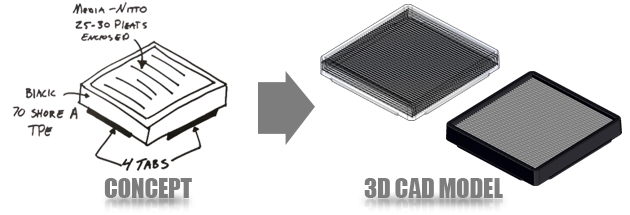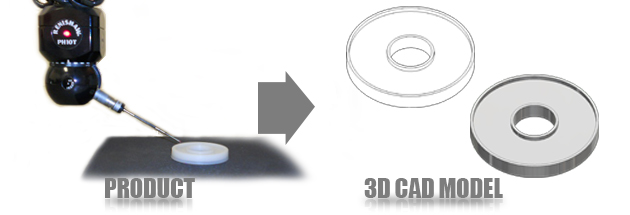
Engineering Services
- Product Development (DFMA)
- CAD Services
We understand the importance of DFMA (Design for Manufacturing and Assembly) and incorporate it from the start of collaboration and ideation. Following several key steps reduces product development time and costs, lowers part costs and rework, and creates a smooth transition into production for a quicker time-to-market.
Customer Collaboration and Part Design
Since 65% to 75% of the final cost of the product is fixed by the product plan and design, we place extra emphasis on customer collaboration and design involvement. Understanding the product's requirements allows for proper design techniques and resin selection. A few methods that are used to monitor the product's likelihood to fail and robustness are Finite Element Analysis (FEA), Failure Mode Effect Analysis (FMEA) and Advanced Product Quality Planning (APQP).
Another key component of the part design is to analyze the moldability of the product. Some of the areas reviewed are: wall thickness, rib to wall ratio, thin-wall flow length to wall thickness ratio, and identifying proper draft.
Mold Design and Build
Key characteristics such as lifespan of the product and volume are evaluated during the mold design process. Evaluating these characteristics will determine how durable the mold will be constructed, type of runner and gate used, ejection type, and interchangeability of components to ensure efficiency, longevity, and performance at the lowest costs.
Molding Process
The injection molding process is developed to make certain that the design allows for a robust and maintainable processing window, and part to part consistency. Processes are validated through DOE, rheology, gate seal, MoldFlow, temperature mapping, optimization of cycle time, and material selection.
Quality Assurance
Another key step in the DFMA process is quality assurance. With the goal of maintaining long-term statistical capability of critical dimensions, each tolerance and dimension is reviewed and critical steel dimensions will be in a steel safe condition.
Automation
During the automation analysis, part design is reviewed for ease of automation upstream or downstream with respects to repeatability, part costs, and volumes.
We utilize the latest cutting edge CAD, CAM, translation and verification software. Solidworks is our CAD software of choice, but we have the capability to translate additional file types: Catia, ProE, IGES, and STP. Our design engineers can help you with developing a robust product in a timely and cost effective manner.
Part Design (Plastic and Metal)
Since 65% to 75% of the final costs of the product is fixed by the product plan, we place extra emphasis on customer collaboration and design involvement. We like to be involved at the concept stage. Understanding the product's requirements allows for proper design techniques and material selection. Leveraging our experience and skill will ensure a high ROI with the front-end development. We are able to take your concept and create a 3D CAD model, with minimal technical detail, and meet your design objectives. Our design engineers are able to create a 3-D model of each component in the product, assemble all the components into complete product, run CAD simulation to check the interaction of components, create rendering of the product for presentations, and create detailed dimensioned drawings.

Reverse Engineering
Exact Engineering Inc. also offers reverse engineering solutions. We are able to port in your pre-existing product to create full 3-D CAD models. Some of the tools utilized for reverse engineering are: vision system, coordinate measuring machine, and laser scanning. While reverse engineering your product, we get a better understanding of the original design intent and offer solutions to improve the performance of the product, and add enhancements to improve the manufacturability. These improvement solutions will lead to a cost reduction while having a better product to market.

Metal To Plastic Conversion
Changing from metal to plastic offers some great benefits: weight reduction, manufacturability, and new design enhancements opportunities. Multiple metal parts can be combined into one plastic part, resulting in cost reduction. Our design engineers work directly with major material suppliers to locate the correct plastic for your conversion without compromising any performance or mechanical properties required.
